Best Dust Collector on Amazon 2024
- April 2, 2024
- 0 comment
In the pursuit of maintaining a clean and healthy workshop environment, selecting the best dust collector becomes an essential task for any craftsman or DIY enthusiast. As of 2024, the marketplace is brimming with a variety of dust collector models, each promising to offer superior dust management solutions.

When browsing Amazon, the leading e-commerce platform, customers are presented with an array of options that cater to different needs, from compact, mobile units ideal for small workshops, to more robust, stationary systems designed for heavy-duty dust extraction in larger spaces.
The top-rated dust collectors of the year not only emphasize efficiency and effectiveness in capturing fine dust particles but also prioritize user convenience, durability, and noise reduction.

Features such as high suction power, large collection bags, and advanced filtration systems are common among the best sellers, ensuring that users can maintain a clean air environment while minimizing the impact on their workflow.
This guide aims to navigate through the plethora of options available, highlighting key features, performance metrics, and user feedback to aid in the decision-making process for finding the best dust collector on Amazon in 2024.
Best Dust-Collecting Systems on Amazon 2024 List:
- Vacmaster Wet/Dry Vac With Cyclonic Dust Bags
- Dewalt Dust Separator with 10 Gal Stainless Steel Tank
- WEN DC1300 1,300 CFM 14-Amp 5-Micron Dust Collector
- SHOP FOX Portable W1727 1 HP Dust Collector
- BOSCH 9 Gallon Dust Extractor with Auto Filter Clean
- Festool 574930 CT 26 E HEPA Dust Extractor
- JET DC-1100VX-CK Vortex Cone Dust Collector
- Grizzly G0548ZP 2 HP Canister Dust Collector
Comparison Table By Each Model
| Product | CFM (Airflow Capacity) | Filter Type | Power | Capacity | Key Features |
|---|---|---|---|---|---|
| Vacmaster Wet/Dry Vac With Cyclonic Dust Bags | 400 | Cyclonic Dust Bags | 5.5 HP | 20 litres | Wet/Dry, Cyclonic Bags |
| Dewalt Dust Separator with 10 Gal Stainless Steel Tank | 155 | Dust Collect Separator | 5.0 HP | 10 Gal | Stainless Steel Tank |
| WEN DC1300 1,300 CFM 14-Amp 5-Micron Dust Collector | 1,300 | 5-Micron | 2.25 HP | 50 Gal | High CFM, 5-Micron Filter |
| SHOP FOX Portable W1727 1 HP Dust Collector | 800 | 1-Micron | 1 HP | 45 Gal | Portable, 1-Micron Filter |
| BOSCH 9 Gallon Dust Extractor with Auto Filter Clean | 150 | Auto Clean | 9.5 Amp | 9 Gal | Auto Filter Clean, 9 Gal |
| Festool 574930 CT 26 E HEPA Dust Extractor | 138 (3900 L/Min) | HEPA | 26 Amp | 26 Liters | HEPA, Compact |
| JET DC-1100VX-CK Vortex Cone Dust Collector | 1100 | 2-Micron | 2 HP | 15 Gal | Vortex Cone Technology |
| Grizzly G0548ZP 2 HP Canister Dust Collector | 1700 | 1-Micron | 2 HP | 35 Liters | High Power, 1-Micron Filter |
1. Vacmaster Wet/Dry Vac With Cyclonic Dust Bags
If you’re asking whether exposure to wood dust can lead to health issues, the simple answer is yes, emphasizing the importance of managing it effectively. However, if a traditional dust collector seems too expensive or too large for your space, you can enhance your Vacmaster wet/dry vac with a few cost-effective modifications. One such modification includes adding HEPA filtration to your shop vac.
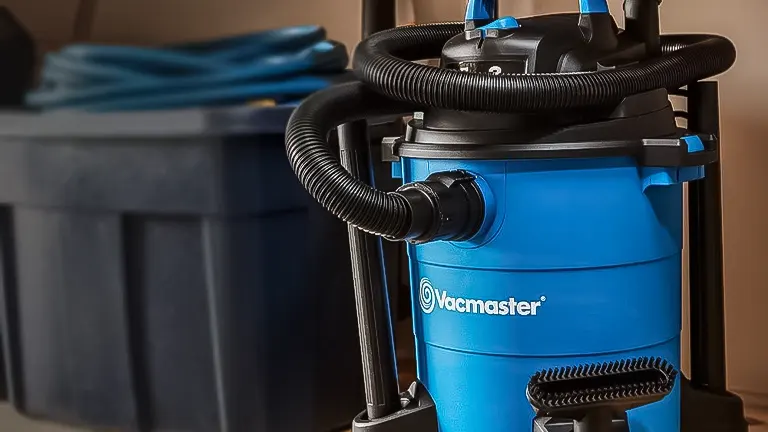
Using a HEPA filter in conjunction with a dust bag can eliminate up to 99.97% of airborne particles that are 0.3 microns in size or larger. These bags are designed with a ring shape, unlike the conventional U-shaped bags, facilitating a cyclonic airflow. This design helps distribute dust more uniformly inside the bag, enhancing efficiency.
Furthermore, incorporating a cyclone separator into your setup, such as the Dust Deputy, can significantly improve dust collection. This device is effective at capturing approximately 98% of dust, directing it into a five-gallon bucket. This process keeps your shop vac’s filter cleaner and more efficient over time.
Pros
- Cost-effective solution
- Portable and versatile for both wet and dry cleanups
- Effective at gathering dust from individual tools
Cons
- Limited in terms of capacity, power, and overall filtration capabilities
2. Dewalt Dust Separator with 10 Gal Stainless Steel Tank
The DeWalt separator, when used alongside a wet and dry vacuum, forms an effective duo for dust management. Its compatibility with a shop vac means there’s less worry about the filter getting clogged from non-dust materials. It features a versatile port that accommodates either a 1-7/8″ or 2-1/2″ (48 or 64mm) hose, making it suitable for various dust collection systems.
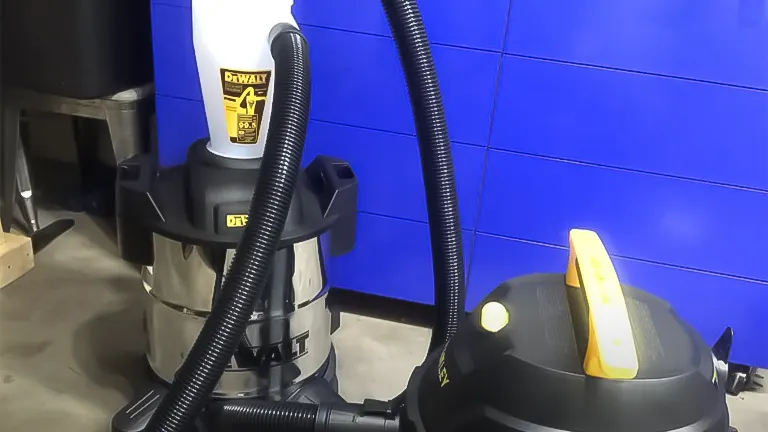
The separator’s internal turbine airflow significantly boosts the vacuum’s suction capabilities, capturing 99.5% of airborne debris. This not only prevents suction loss but also keeps floors and air cleaner by trapping dust particles.
Pros
- Maintains consistent suction
- Reduces risk of vacuum filter clogs
- Effectively traps dust from various materials including wood, drywall, concrete, and metals
Cons
- Necessitates having an additional wet and dry shop vacuum
3. WEN DC1300 1,300 CFM 14-Amp 5-Micron Dust Collector
The WEN DC1300 1,300 CFM 14-Amp 5-Micron Dust Collector is a standout tool designed to maintain a dust-free environment in workshops and garages. This unit boasts a powerful 14-amp motor that delivers a robust airflow rate of 1,300 cubic feet per minute (CFM), making it highly effective at capturing dust particles and ensuring a cleaner work area.
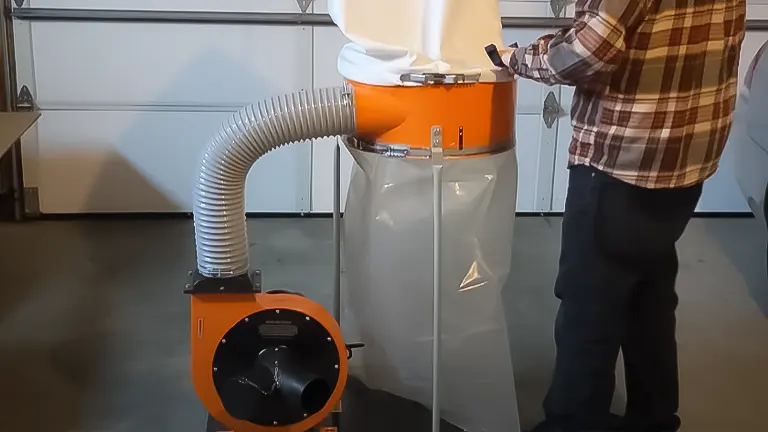
Its high-performance system is equipped with a 5-micron filter bag, which efficiently traps fine dust particles, preventing them from being recirculated into the air. The dust collector’s sizable capacity and easy-to-use features, such as a quick-release bag for straightforward disposal and a portable design for easy mobility around the workspace, make it a practical solution for managing dust in a variety of settings.
The WEN DC1300’s performance accuracy lies in its ability to consistently maintain optimal suction and filtration, even in demanding conditions, thereby safeguarding the user’s health and prolonging the lifespan of workshop tools by keeping them dust-free.
Pros
- High Suction Power: Boasts a 1,300 CFM rating for efficient dust and debris removal.
- Effective Filtration: Features a 5-micron filter bag for trapping fine dust.
- Versatile Compatibility: Connects easily to various woodworking tools.
Cons
- Filter Maintenance: Requires regular cleaning for peak performance.
- Size and Mobility: May be bulky and less portable for small spaces.
- Noise Level: Operates loudly, potentially needing hearing protection.
4. SHOP FOX Portable W1727 1 HP Dust Collector
The Shop Fox Dust Collector combines mobility with powerful performance. This compact system boasts a 1,280 CFM suction capability, making it adept at handling dust collection from larger equipment. Equipped with a 2.5-micron felt upper filtration bag, it effectively removes dust and fine particles from the air, offering impressive efficiency for its size and cost. Its construction includes powder-coated paint for rust resistance and a sturdy steel build for enhanced durability.
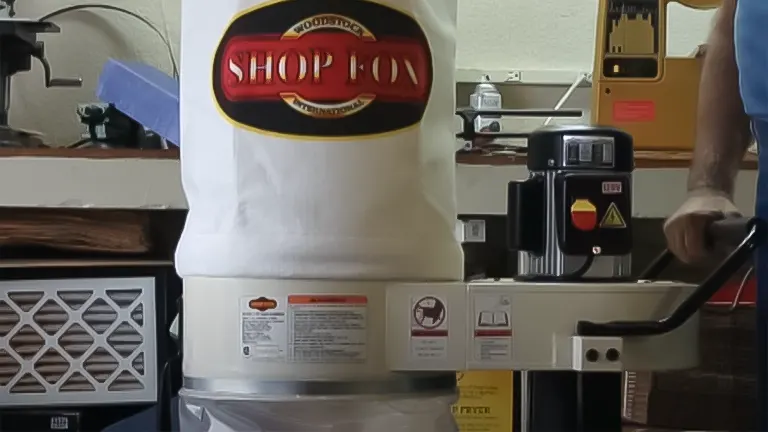
Featuring a steel impeller, this model excels in processing wood debris and directing it into the 2.5-micron filter bag. This steel impeller outperforms plastic alternatives in durability and performance longevity. The machine also comes with a detachable Y-fitting and two 4-inch intake ports, facilitating simultaneous connection to multiple devices. This design is ideal for setups requiring the operation of several machines at once.
Pros
- Powerful air suction capability
- Resistant to scratches and corrosion
- Built with a strong steel frame
- Offers dual 4-inch intake ports for multiple machine connections
- Finished with a durable powder-coated paint
Cons
- The caster wheels could offer smoother swiveling
5. BOSCH 9 Gallon Dust Extractor with Auto Filter Clean
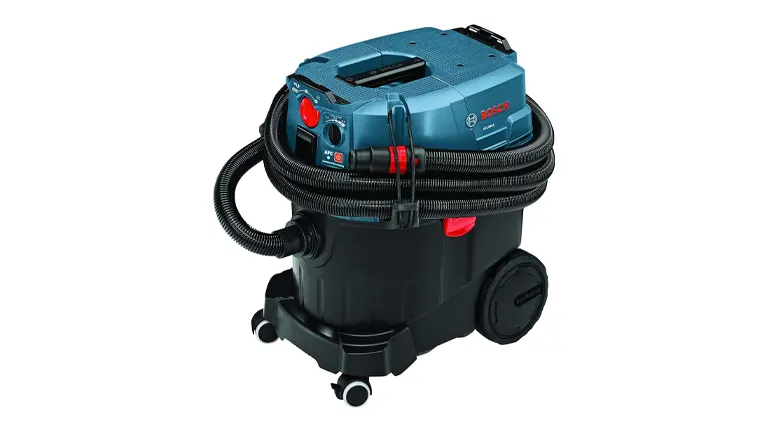
The BOSCH 9 Gallon Dust Extractor with Auto Filter Clean is a highly efficient tool designed for maximum dust extraction and filtration. Its standout feature is the automatic filter cleaning system, which ensures the filter remains clear and functional without manual intervention, maintaining optimal suction and performance.
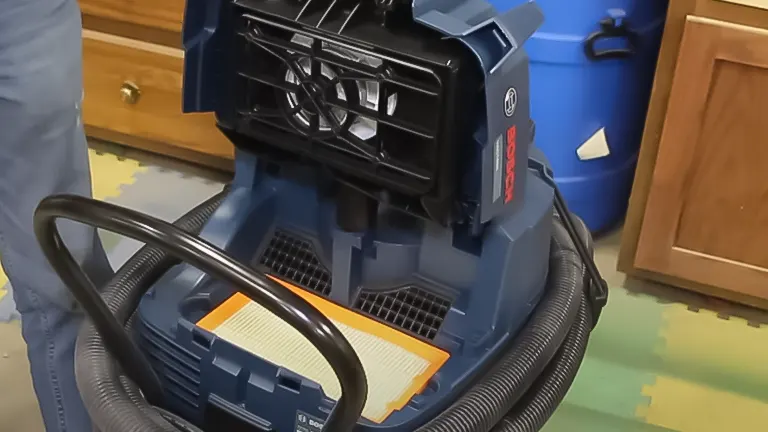
This system, combined with a generous 9-gallon capacity, makes it ideal for extended use in both professional and DIY settings. The dust extractor operates with a powerful suction capability, making it suitable for a wide range of materials and dust particles. Its design emphasizes user convenience, durability, and adherence to HEPA standards, capturing 99.97% of particles as small as 0.3 microns, thereby ensuring a clean, healthy work environment.
Pros
- Auto Filter Clean: Keeps the filter clear automatically, boosting suction and durability.
- Large Capacity: 9 gallons for less frequent emptying, ideal for large projects.
- HEPA Compliant: Captures very fine dust particles efficiently.
Cons
- Weight: May be heavier and less portable due to size and capacity.
- Price: Higher cost due to advanced features and performance.
- Noise: Potentially loud due to powerful suction.
6. Festool 574930 CT 26 E HEPA Dust Extractor
The Festool Dust Extractor, certified with HEPA filtration, delivers unparalleled air cleanliness and efficient filtration, all while operating quietly at 62 decibels. It features a robust motor capable of achieving 137 CFM of suction power, and the dust container has a generous capacity of nearly seven gallons.

This dust collector is designed to work seamlessly with Festool tools, eliminating the need for different adapters. It boasts an automatic start feature that activates the vacuum only when the tool is in use, enhancing convenience. Maneuverability is facilitated by its oversized wheels and a parking brake that keeps the unit stationary when needed, preventing any unwanted movement.
Pros
- Seamless integration with Festool tools
- Strong suction capability
- Vac starts automatically with tool use
- Extended power cord for greater reach
- Operates with minimal noise
Cons
- Limited wheel swivel, with only two out of four wheels able to pivot
7. JET DC-1100VX-CK Vortex Cone Dust Collector
The JET DC-1100VX-CK Vortex Cone Dust Collector stands out with its innovative Vortex Cone technology, which significantly enhances dust collection efficiency by preventing filter clogging and improving chip separation.
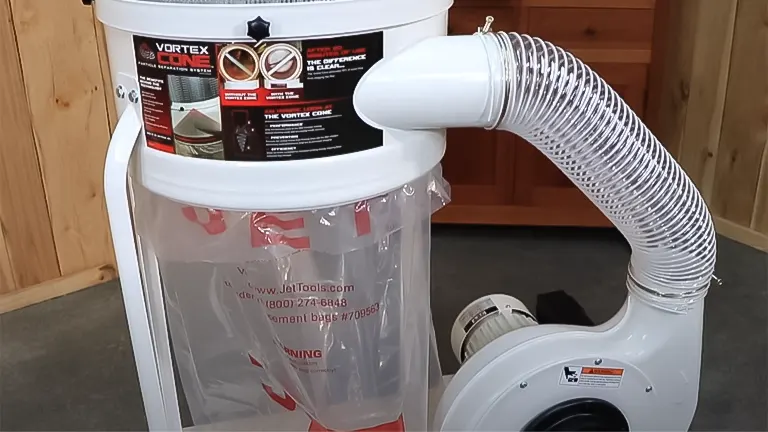
Operating at 1.5 horsepower, it delivers a robust airflow capacity, making it adept at handling dust extraction for various workshop tools and machines. The inclusion of a 2-micron canister filter ensures that even the finest dust particles are captured, resulting in cleaner air and a healthier workspace.
Performance-wise, the JET DC-1100VX-CK is engineered for reliability and durability, offering consistent suction and filtration. Its design focuses on maximizing dust collection efficiency and maintaining performance accuracy over time, making it a valuable addition to any professional or hobbyist workshop.
Pros
- Fan-cooled motor enables continuous usage
- Quick connect bag system
- Strong steel construction
- Four swivel casters
Cons
- Bulky
- On the heavier side
8. Grizzly G0548ZP 2 HP Canister Dust Collector
Grizzly’s robust dust collector is ideally suited for larger or professional workshop environments. Its canister filter outperforms standard bag filters significantly, offering six times the surface area for filtration due to its one-micron filters. Maintenance is simplified with an externally operated cleaning brush, setting it apart from other dust collection systems in ease of upkeep.
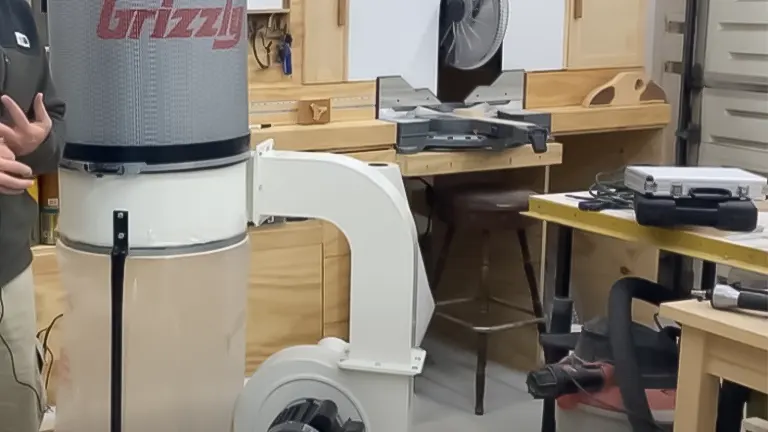
The collector includes a sturdy steel adapter, allowing for the connection of up to three four-inch ducts simultaneously. This feature is particularly useful as it enables direct attachment to a range of saws including band saws, miter saws, and planers for efficient dust removal. Additionally, it comes with extra, transparent bags designed for easy monitoring and replacement.
Pros
- Durable steel adapter for multiple connections
- External cleaning brush simplifies maintenance
- Straightforward assembly process
- Direct connection capability with various saws
Cons
- Generates a high level of noise
Buying Guide: Choosing a Dust Collector
When selecting a dust collector, consider its air pull capacity (cfm) to exceed the demands of your most air-intensive tool and its ductwork. Other key factors include air filtration level and the size of the collection bag. New woodworkers with limited funds might opt for a small, portable dust collector, which is easy to move but might lack advanced dust separation features, leading to frequent filter cleanings. Upgrading to felt bags with a 5-micron rating can enhance dust capture, particularly for particles under 10 microns, which are most harmful to lungs. Noise level is another consideration to ensure a comfortable working environment.
Dust Collector Types Explained
Dust collectors vary from stationary systems to portable extractors, including canister, backpack, and compact models, each differing in tank sizes and performance (cfm and static pressure). The right choice depends on the dust type, its source, and volume. Adherence to OSHA guidelines on dust safety is crucial. Options range from shop vacs, suitable for small tools and frequent emptying, to dust extractors with automatic switches and quiet operation, single-stage collectors for larger tools, and cyclonic canisters for efficient fine particle capture.
Recommendations For User’s Perspectives
Our expertise in woodworking and product research guides our selection of top dust collectors. We’ve analyzed the market, focusing on airflow, noise levels, and various collector types to bring you the most effective options. Emily Way, with her extensive product research background, updated this guide, ensuring each product offers quality and value. Consulting with Heather Lockhart from DeWalt, we’ve included insights from industry professionals to inform our strategic product recommendations.
Finding the Best Dust Collector
Our selection process involved examining market offerings, utilizing our woodworking expertise to identify the top 20 machines. We then evaluated these based on airflow, noise, dust collector types, and efficiency metrics, resulting in a curated list of the 10 best dust collectors suited for various applications.
Final Concluding Thoughts
In the realm of woodworking and dust management, choosing the right dust collector is pivotal for maintaining a clean, safe, and efficient workspace. Whether your needs align with a compact, portable unit for a burgeoning home workshop or a robust, stationary system for professional-grade dust extraction, understanding the nuances of air flow capacity, filtration efficiency, and the specific demands of your tools and workspace is essential.
Upgrading to advanced filtration bags, considering the physical footprint of the unit, and ensuring compliance with safety standards such as those set by OSHA can significantly enhance your workshop environment. Ultimately, investing in a dust collector that aligns with your specific needs, budget, and space constraints will not only safeguard your health but also elevate the quality of your craftsmanship and the longevity of your tools.
Frequently Asked Questions
- What is CFM and why is it important in a dust collector?
CFM stands for cubic feet per minute, indicating the volume of air the dust collector can move. It’s crucial because a higher CFM means better capacity to capture dust, especially from larger tools. - How do I know if I need a portable or stationary dust collector?
Consider your workspace size, tool usage, and mobility needs. Portable collectors are suitable for small spaces or where tools are frequently moved, while stationary systems are ideal for larger, permanent setups. - What does micron rating mean in dust collectors?
The micron rating refers to the size of particles the filter can capture. Lower numbers indicate the ability to trap finer dust particles, improving air quality and safety. - Can dust collectors capture harmful particles like silica dust?
Yes, with proper HEPA filtration, dust collectors can capture particles as small as silica dust, protecting your lungs from harmful exposure. - How often should I clean or replace the filter in my dust collector?
This varies by usage and the dust collector model. Check the manufacturer’s recommendations, and monitor suction performance and filter condition for guidance. - Are dust collectors noisy? How can I reduce noise levels?
Some models can be noisy. To reduce noise, look for units with lower decibel ratings, use sound dampening materials around the collector, or place the unit in a separate room. - Is it difficult to install a dust collector?
Installation complexity varies. Portable units are typically plug-and-play, while stationary systems may require more planning for ductwork and space. Always follow the manufacturer’s instructions. - How does a cyclone dust collector differ from a traditional dust collector?
Cyclone collectors separate larger debris before it reaches the filter, reducing filter clogging and maintenance. They’re often more efficient for collecting larger particles. - Do I need to worry about static electricity with my dust collector?
Yes, especially with plastic ductwork or hoses. Static can be a fire hazard with fine dust particles. Grounding your system can reduce this risk. - Can a dust collector be used for wet applications?
Not all dust collectors are suitable for wet and dry applications. Check if your unit is a wet/dry vacuum to avoid damage or safety hazards with wet debris.
We’re excited to learn about your experiences! If you’ve had the opportunity to try out some of the best dust collectors available on Amazon for 2024, we invite you to share your thoughts and feedback in the comments section below. Your personal perspectives and reviews are invaluable in guiding fellow woodworkers and DIY buffs toward making educated decisions. Together, let’s discover the optimal dust collector options for our workshops!

Edward Smith
Forestry AuthorWoodworking is about more than crafting; it's a harmonious connection with nature, mastering tools, and preserving our environment. I'm here to share my knowledge and experiences with you, forging a future where we can embrace wood's beauty and utility while safeguarding our forests' health and diversity.

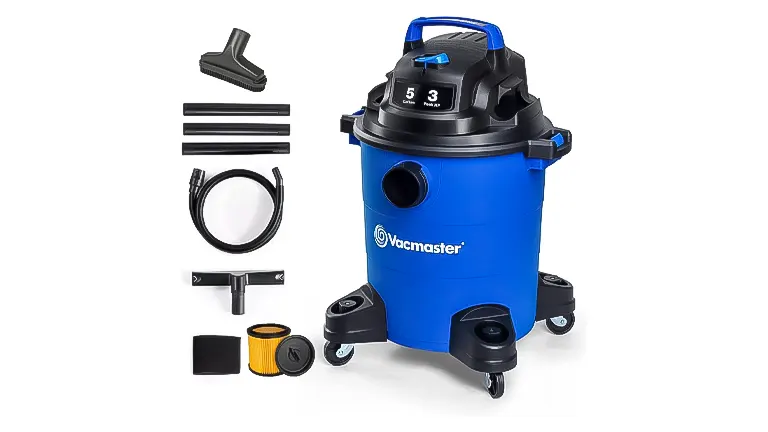
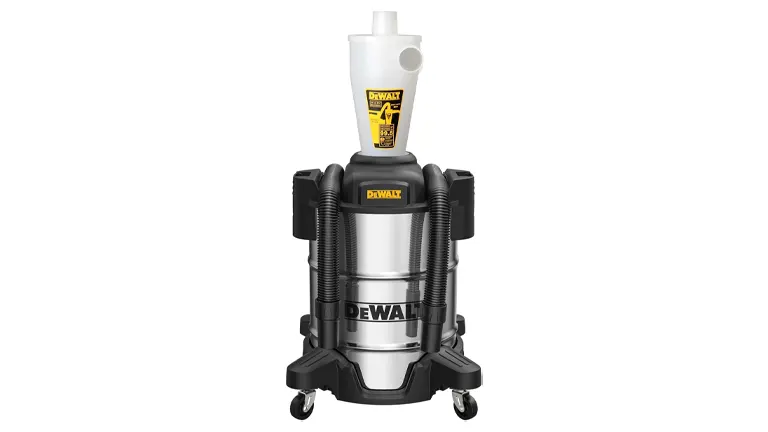
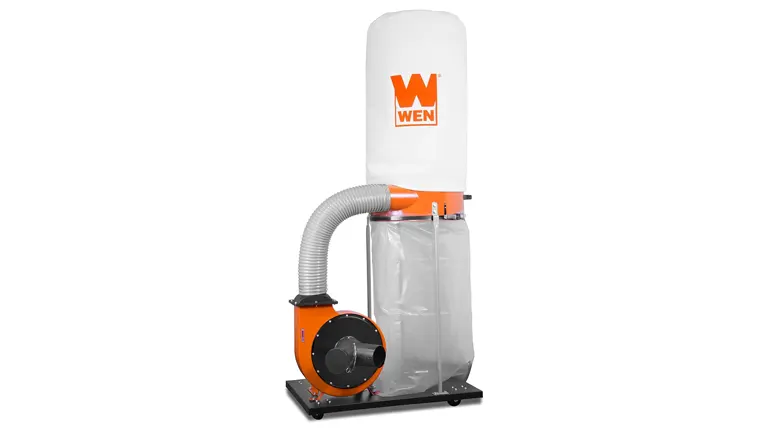

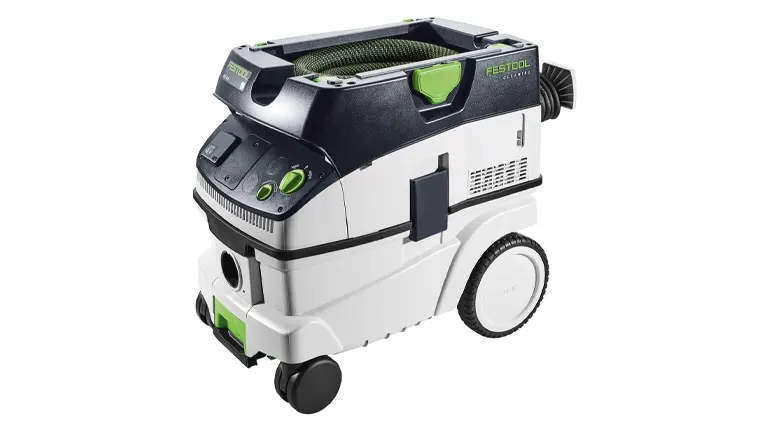
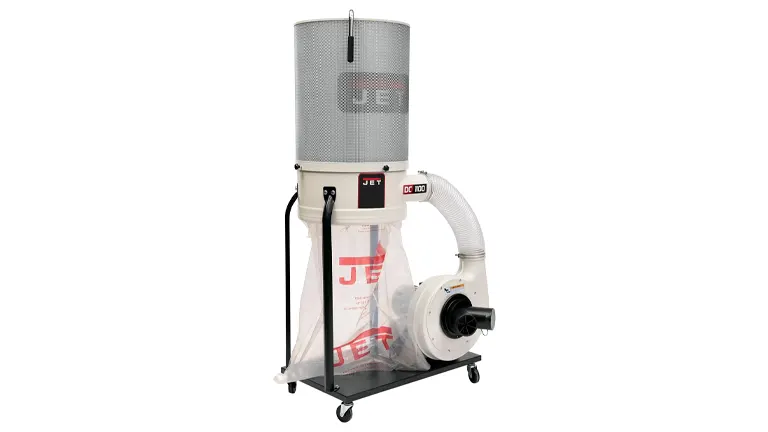
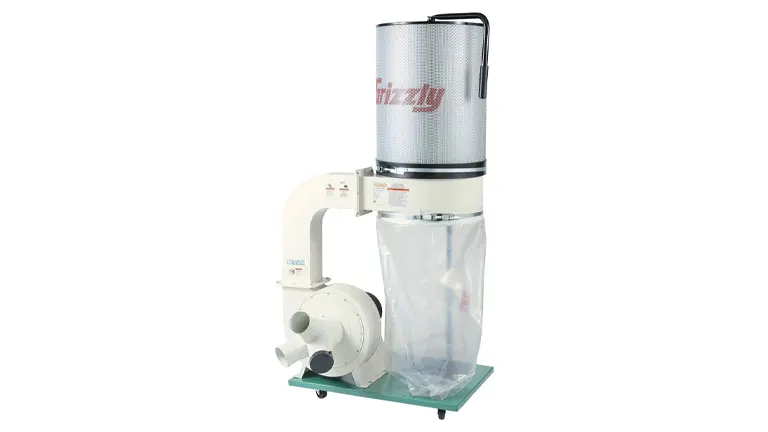

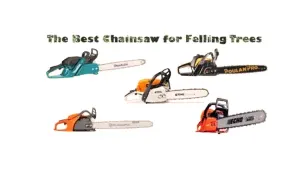





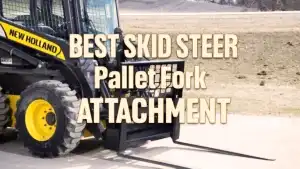

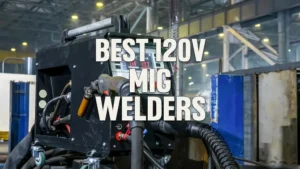
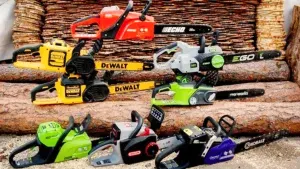

Leave your comment